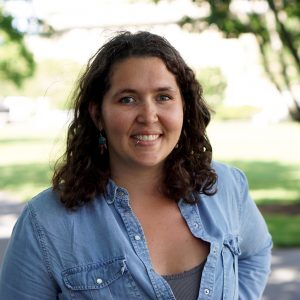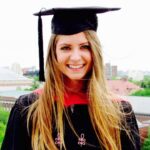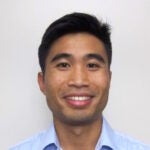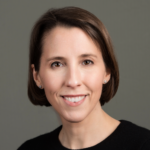CCDD alumni have been actively putting their research training to use in the fight against COVID-19. CCDD is proud to have trained more than 40 alumni, now working across the country and around the world, many of whom are leading their own university research groups and working in governmental and public health agencies. Below are featured alumni and their work on COVID-19.




Global Reach: Lauren Cowley, PhD
Prize Fellow of Bioinformatics, University of Bath, UK
CCDD Postdoctoral Research Fellow, 2016-2018
Briefly describe your COVID-19 related work.
In collaboration with CCDD’s Professor Caroline Buckee, I am currently working on a genomic epidemiology project in Bangladesh to use Nanopore sequencing in country to track SARS-CoV-2 lineage emergence and progression in Bangladesh. The genomic data is being paired up with mobility data provided by mobile phone operators and Facebook to track the effect of population mobility on the evolution and transmission of SARS-CoV-2 throughout the country. I have also been deployed to the UK Cabinet office for the COVID-19 government response. I am working part time in the International Comparisons Joint Unit that put together information documents on various subjects relating to how the COVID-19 response is handled around the world to be given to policy makers and key government officials.
How did your time at CCDD prepare you to do this?
My time at CCDD broadly increased my knowledge of communicable diseases and epidemiology. Prior to working there, I was much more experienced in sequencing analysis than epidemiology and had virtually no understanding of modelling. CCDD taught me some of the basics of modelling as well some key concepts in epidemiology that can be applied to all infectious diseases. This has been hugely useful for my work at the ICJU in the UK cabinet Office as we are often translating modelling results and caveats for policy makers in the UK government.
The Power of Teamwork: Sarah McGough, PhD
Sr. Data Scientist, Genentech
Harvard Chan School SM ’16, PhD ’19
Briefly describe your COVID-19 related work.
Epidemic curves always look like they are declining in recent weeks because of reporting delays. “Nowcasting,” or predicting the present, is a method that attempts to correct epidemic curves for delayed reporting and predict cases not yet reported. A colleague at the CDC and CCDD affiliate, Michael Johansson, raised the need to operationalize a sound nowcasting tool that could perform well in multiple disease settings and aid real-time surveillance. Together with Marc Lipsitch and Nick Menzies at HSPH, we developed a Bayesian nowcasting algorithm and open-source software (the R package “NobBS”, or “Nowcasting by Bayesian Smoothing”), originally implemented on dengue fever and influenza outbreaks. However, when the COVID-19 pandemic struck, the importance of prompt response and accurate real-time surveillance was clear. Our generalizable nowcast approach was adopted by public health departments globally to nowcast COVID-19 cases and deaths, including New York City, Brazil, Mexico, and Bolivia, and multiple researchers internationally. I worked with these stakeholders to guide implementation of the R package and provide custom solutions for specific nowcasting needs.
How did your time at CCDD help prepare you to do this?
The CCDD is a tight-knit community with wide reach. Through my work with Prof. Marc Lipsitch and others at CCDD, I was connected with Michael Johansson and learned about his work overseeing dengue and Zika modeling in Puerto Rico, and the need to improve surveillance through nowcasting and forecasting. We combined elements of classical nowcasting with epidemic curve modeling to create a simple yet elegant solution for infectious diseases. I feel that the CCDD has a strong undercurrent of creative problem solving in the disease modeling space, to which I had repeated exposure through my coursework, mentors, and classmates. This project involved many long whiteboard sessions to work through challenges and ideate. Finally, it also helps that Marc’s Twitter following has increased substantially in recent times, which gave global attention to our nowcasting solution!
The Power of Teamwork: Francisco Cai, MS
MD candidate, Northwestern University
Harvard Chan School MS ’15; CCDD Research Assistant, 2015-2017
Briefly describe your COVID-19 related work.
Because not all cases of a disease are reported in real-time, Sarah McGough and others at HSPH developed a method to predict the number of total cases right now (a “nowcast”) based on the number of cases reported so far. To make this method more accessible, I developed a web dashboard that helps users by offering interactive tips for the different options, displaying the results graphically in the web browser, and allowing the users to download their results.
How did your time at CCDD help prepare you to do this?
From my CCDD research mentors Profs. Caroline Buckee and Marc Lipsitch, I learned about Sarah’s work and how she was fielding many questions from people using the nowcasting method. That got me thinking about how useful it would be to have a more user-friendly interface. From my studies and research in infectious disease modeling at CCDD, I was able to understand the method that Sarah developed and felt comfortable translating the technical concepts into lay language. I built the web dashboard using the programming language R, which I became familiar with during my time at CCDD.
Bridging Academia and Policy: Sarah Cobey, PhD
Associate Professor, Ecology & Evolution, University of Chicago
CCDD Postdoctoral Research Fellow, 2010-2013
Briefly describe your COVID-19 related work.
I am working in two main areas: (1 developing transmission models to understand the spread of SARS-CoV-2 in Illinois and help inform policy at the State level, and (2 using longitudinal seroepidemiological studies to understand the durability of the immune response, correlates of protection, and eventually why and how people differ in their responses to the flu and COVID-19 vaccines. I’ve collaborated on two papers with Prof. Marc Lipsitch on Rt estimation, and one on vaccine prioritization with Prof. Yonatan Grad (HSPH) and fellow CCDD alum, Prof. Dan Larremore (University of Colorado, Boulder).
How did your time at CCDD help prepare you to do this?
My postdoctoral fellowship at CCDD greatly improved my modeling skills. Being there also taught me how to interact with policy makers and the press and to seize opportunities. At the time, I learned the latter two mostly from watching other people do it!
